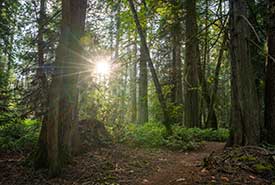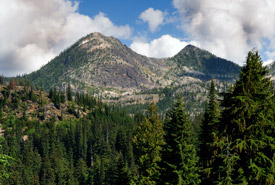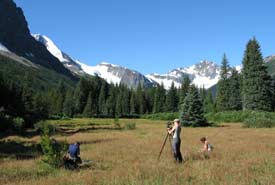NCC: Land Lines – From the treetops: A closer look at Canada’s forests (part one)

Misty temperate rainforest in Incomappleux (Photo by Paul Zizka)
From the treetops: A closer look at Canada’s forests (part one)
Forests across Canada are more than just beautiful landscapes. They are home to recreation and quiet reflection. Forests provide cultural continuity for Indigenous communities and offer space to connect with nature.
Considering that forests cover nearly half of Canada’s landmass, their importance to the lives of Canadians cannot be overstated.
Forests are also essential to our planet’s health, supporting wildlife and protecting against the effects of climate change.
What are the different kinds of forests in Canada?
Forests across the country are classified into eight different regions. These regions are based largely on the types of trees and other vegetation that are most dominant across that forest. Classifying and mapping forest regions is important for forest management and conservation.
Take a closer look at four of Canada’s forest regions, from BC’s West Coast to Alberta:

Reginald Hill, Salt Spring Island, BC (Photo by Fernando Lessa)
Coastal forests
Found in BC, coastal temperate rainforests are globally rare, covering less than 0.2 per cent of the Earth’s surface. These forests are known for their massive cedars, Douglas-firs and other conifers. They are rich in biodiversity and store large amounts of carbon.
Reginald Hill Conservation Area (BC)
Columbia forests
Located in the lower elevations of southeastern and central BC, Columbia forests are home to western red-cedar, western hemlock and Douglas-fir. They support over 35 species at risk, including grizzly bears and wolverines.
Elk Valley Heritage Conservation Area (BC)

Kootenay River Ranch, BC (Photo by Richard Klafki/NCC staff)
Montane forests
Stretching across central BC and western Alberta, montane forests are warm and dry. They feature Douglas-fir, lodgepole pine, ponderosa pine and trembling aspen. These forests have been significantly altered by land use changes and fire suppression.
Jim Prentice Wildlife Corridor (AB)

Darkwoods, British Columbia (Photo by Tim Ennis/NCC)
Subalpine forests
These forests span from coastal BC to the uplands of Alberta. They have shorter, less dense trees due to the cool, brief growing season and long winters. Avalanches shape this landscape, which includes Engelmann spruce, subalpine fir and lodgepole pine.
Darkwoods Conservation Area (BC)
Canada has some of the world’s most pristine forests, and each is unique and important. Losing forests removes a crucial defense against climate change. And Canadians lose the health, economic and social benefits that forests provide. That’s why it’s essential to conserve and sustainably manage these vital ecosystems.
Find out how you can breathe life into Canada’s forests >
Stay tuned for part two, featuring forest regions from the boreal to the forests of eastern Canada.





